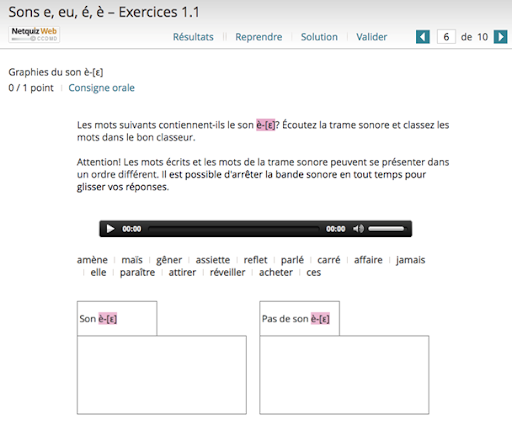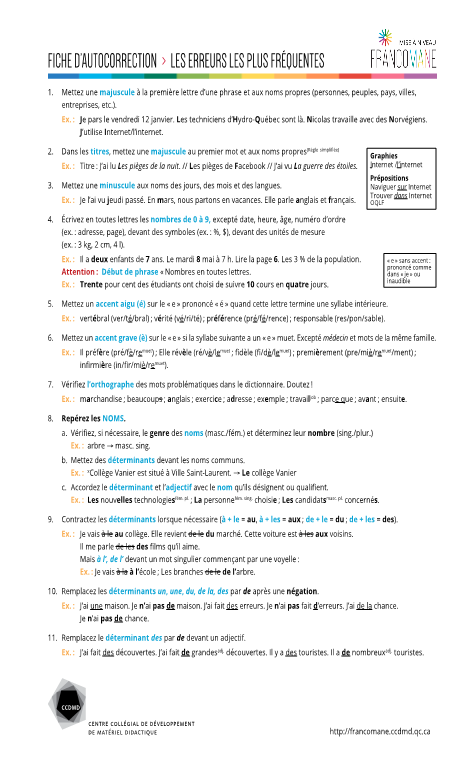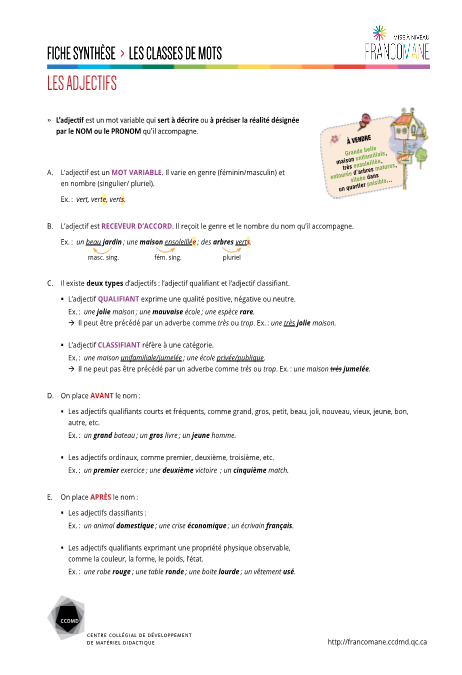My Use of Francomane — Remedial French as a Second Language Courses
As a teacher, I am always on the lookout for new resources for teaching French as a Second Language (FSL). While there are numerous textbooks, online resources are rare for students in remedial courses. You can then imagine my joy when I discovered Francomane last year. That website, fun and easy to use, is very popular with my students.
Presentation of the interface
Francomane is a website that regroups over 300 multimedia resources for the teaching and learning of FSL. Those resources are grouped in 3 large collections:
- Thematic collection
- Grammar collection
- Oral communication collection
I have had the opportunity to use those last 2 in the following courses at Vanier College and Marianopolis College:
- Initiation to French, Second Language
- Remedial Course in French, Second Language
Oral Communication
The oral communication documents are original! I have taught FSL for many years and I am always on the lookout for resources to work on pronunciation in class. Francomane offers some excellent animated clips and relevant exercises to learn to pronounce the most complex sounds of the French language. Here is a short animated clip that explains the pronunciation of the e-[ə] sound perfectly.
The content of the following media might not conform to standards of accessibility.
Animated clip about the pronunciation of the e-[ə] sound.
The image, the voice-over explanation, the written and read examples illustrate in a simple and efficient manner the articulatory characteristics of the e-[ə] vowel sound, one of the hardest sounds of the French language for learners. In general, I show some of the animated clips in class and, thanks to the image, the students are more at ease to practice the pronunciation of the sound studied. Remember that they can also watch the video again at home and practice in front of a mirror. Afterward, I move on to exercises that deal with the identification and the pronunciation of the sound.
In the identification exercises, we find all the written and oral reminders as well as a series of interactive exercises to identify the studied sounds.

An identification exercise for the è-[ε] sound, part of a series of interactive exercises about the sounds e, eu, é and è.
I especially like the audio file that comes with each exercise. The students listen to the words pronounced clearly and correctly.
In the pronunciation exercises – my favourites – the learners listen to the pronunciation of a group of words or a short sentence, record themselves, and then listen to their own version! If recording themselves often makes students shy, it is extremely efficient. The students, who are laughing for the most part while listening to their own recordings, end up repeating the exercise many times in a row in order to reach the proper pronunciation. That type of evaluation and comparison exercise can be done in the college’s computer lab or at home.

A pronunciation exercise about the eu-[ø] sound. The student can listen to a short sentence containing the targeted sound, then record himself pronouncing the words.
Grammar
The collections about grammar are about sentence grammar and parts of speech. I have used many documents from that category in my classes. For each part of speech, there is a detailed explanatory animated clip:
- Definition
- Characteristic
- How it is formed
The tables taken from the animated clip summarize the grammatical notions presented. The summary sheets are excellent printable documents: illustrated with simple examples, they summarize in a well-structured manner all of the important information. The visual presentation is very user-friendly: the fonts, the colour codes, the arrows and the images help understand the grammatical notions more easily.
I ask my students to print those summary sheets and to use them when needed. In general, my students consult them to correct their text (self-correction of a written text) and to prepare for exams (grammar and written production). Simple, concise, visually-pleasing and with plenty of examples, those sheets are interesting tools to consolidate the learning of the basics of French grammar.
However, I was disappointed when I had a look at the collection on verbs. The documents deal with the different categories of verbs, with the role of the verb in the sentence and with its characteristics. I would have liked there to be more specialised documents regarding the modes and tenses studied in the remedial courses. An interactive animated clip about the present tense would have been very popular with my students.
A site to use without reserve
The pleasing visuals, the ludic character, the ease of use and the relevance of the documents all make the Francomane website a must for the learning of FSL. Made for students in remedial courses, the site can be used by learners of all levels. I am thinking, for example, of the “self-correction sheet”. That sheet, which regroups all of the most frequent mistakes, is a precious document for the students, who can print it and use it while writing, reviewing and correcting a text. Furthermore, it is used by many FSL teachers at Vanier College.

The printable self-correction sheet offered by Francomane
Lastly, as I am a fan of comics and I want to create a course around autobiographical comics, I am planning on using Francomane’s thematic collection about that genre. I will keep you posted!
To know more about the other resources offered on the Francomane website, developed by the CCDMD, have a look at the Digital Tool published on Profweb on the subject.


